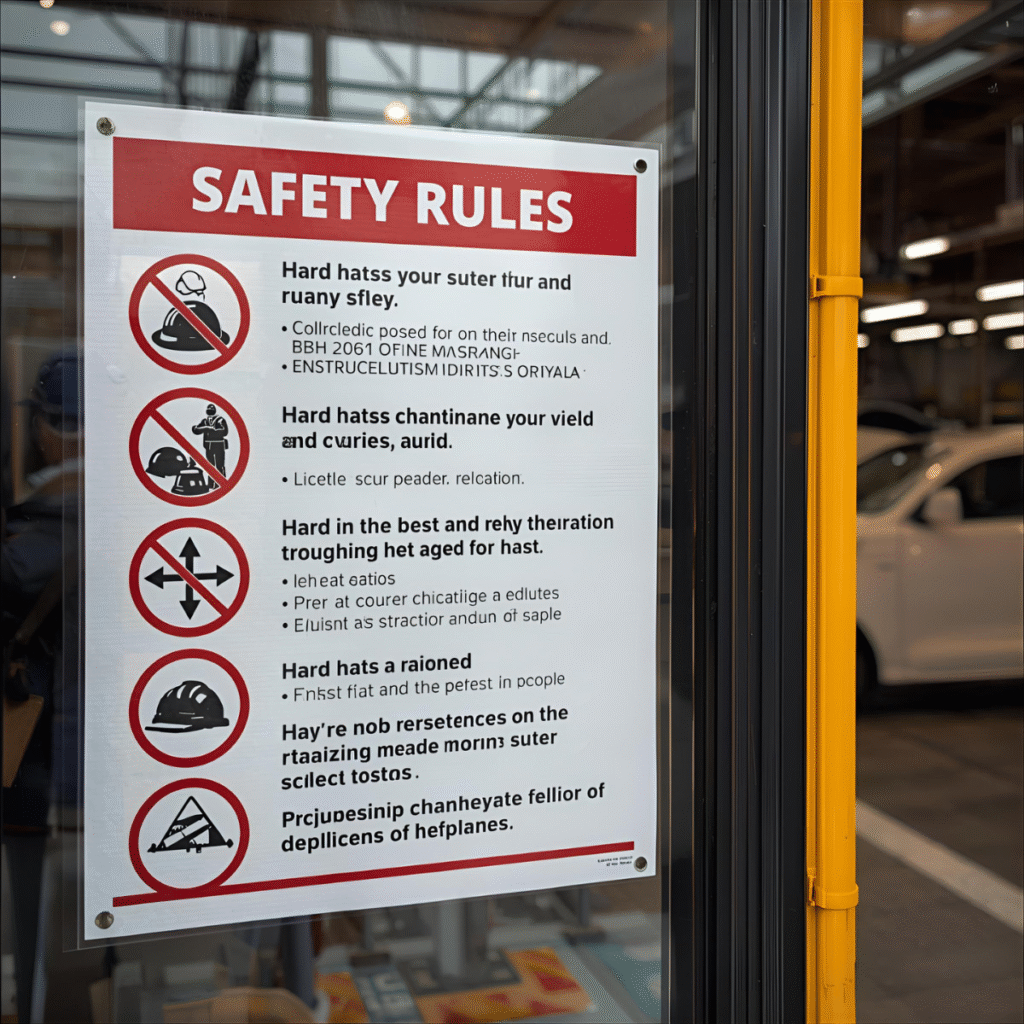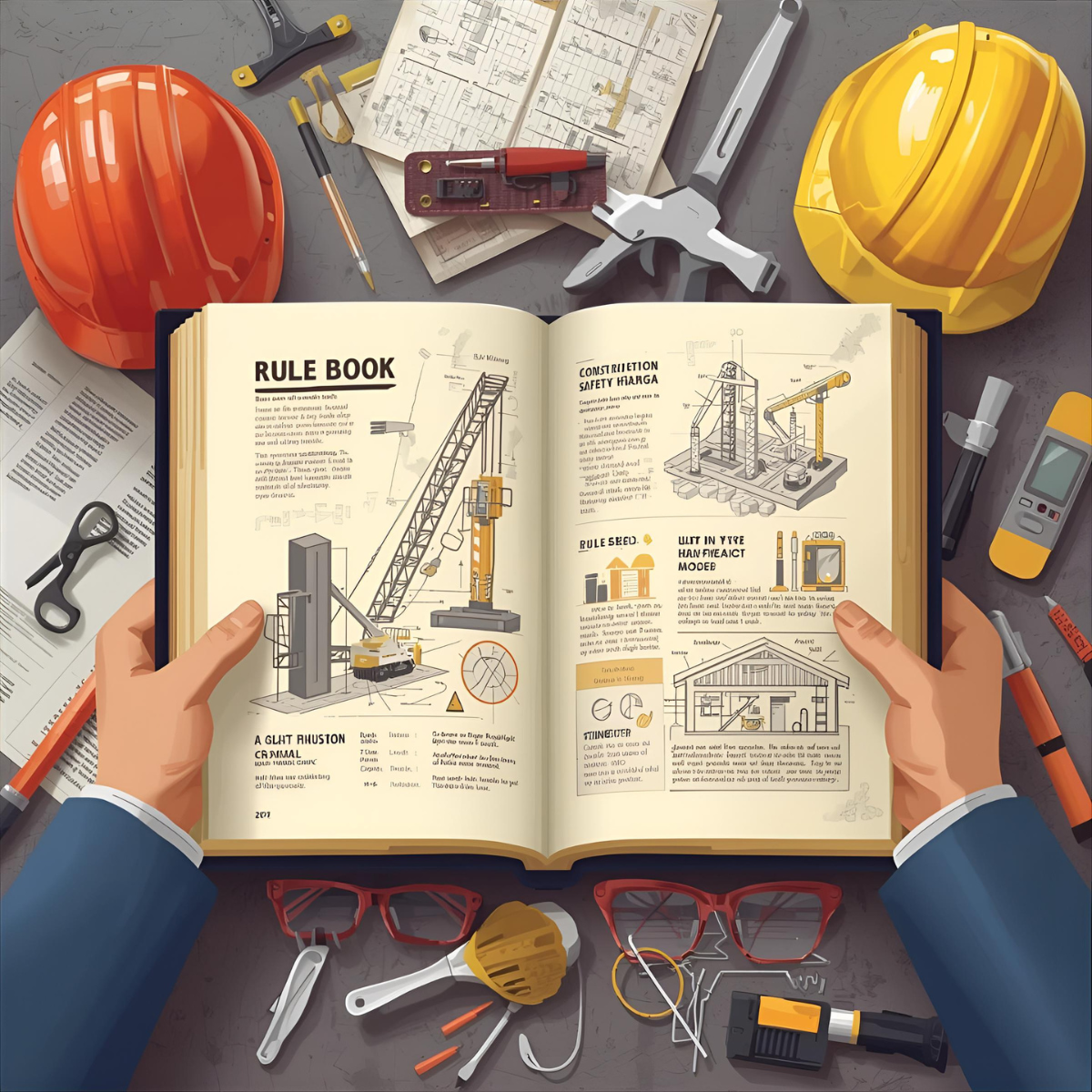Construction sites are one of the most hazardous workplaces in the world. Heavy machinery, high-rise scaffolding, electrical wiring, and continuous manual labor create an environment where safety cannot be compromised. Every year, thousands of accidents occur globally at construction sites, many of which could have been prevented with the right safety measures. That is why construction safety rules are not just guidelines—they are lifesaving practices that every engineer, contractor, and worker must follow.
At Kanakdhara Developer Pvt. Ltd., known as one of the best construction companies in Lucknow, we strongly believe that safety comes before success. Whether we are providing construction services in Uttar Pradesh, offering interior design services, creating 3D interior design walkthroughs, or delivering house map design services, safety protocols remain at the heart of our work culture.
This article explores the most essential safety rules that every construction site must follow, ensuring not only the well-being of workers but also the quality and timely completion of the project.
Why Construction Safety is Non-Negotiable
Safety in construction is not just about avoiding accidents. It is about building trust, maintaining efficiency, and ensuring legal compliance. A single accident on site can result in serious injuries, project delays, legal issues, and even long-term financial loss. More importantly, the lives of workers are at stake, and no project deadline or budget can justify unsafe practices.
In India, agencies such as the Directorate General Factory Advice Service & Labour Institutes (DGFASLI) and state labor departments have established strict guidelines for workplace safety. Contractors and builders must adhere to these rules to ensure worker protection and avoid penalties. Beyond compliance, a safe site also improves worker morale and productivity, which directly contributes to project success.
Essential Construction Safety Rules
1. Personal Protective Equipment (PPE) is Mandatory
No worker should be allowed on site without wearing appropriate personal protective equipment. Helmets, safety boots, gloves, goggles, and high-visibility jackets are the basics. In specialized tasks, workers must also use hearing protection, welding masks, or respiratory gear. PPE acts as the first line of defense against common injuries caused by falling objects, cuts, chemical exposure, or loud noise.
2. Proper Training for Every Worker
One of the biggest reasons for accidents on construction sites is a lack of proper training. Workers should be trained in safe handling of equipment, first aid, and emergency response procedures. Regular safety drills must be conducted so that every person on site knows exactly what to do in case of fire, structural collapse, or accidents.
3. Scaffolding and Fall Protection
Falls are the most common cause of fatalities in construction. Scaffolding must always be erected on stable ground, with secure guardrails and toe boards. Workers operating at heights should be provided with full-body harnesses attached to strong anchor points. Ladders and platforms must be inspected daily to avoid collapses.
4. Machinery and Equipment Safety
Heavy machinery such as cranes, excavators, and concrete mixers must only be operated by trained professionals. Equipment should be inspected regularly, and malfunctioning machines should be immediately reported and repaired. Lockout-tagout (LOTO) procedures must be implemented to prevent accidental startups during maintenance.
5. Electrical Safety Precautions
Construction sites involve extensive electrical work, which can be highly dangerous. Cables must be properly insulated and kept away from water. Temporary wiring should be installed securely, and workers must avoid overloading circuits. Ground-fault circuit interrupters (GFCIs) should be used to protect against electrocution.
6. Clear Signage and Site Rules
Every construction site should have visible safety signage, such as “Hard Hat Area,” “Danger – High Voltage,” or “No Entry Without Permission.” Proper signage helps visitors and workers stay aware of potential hazards. A rule board outlining site-specific safety regulations should be placed at the entrance for quick reference.
7. Fire Safety and Emergency Preparedness
Fire extinguishers, sand buckets, and water sources must be available throughout the site. Workers should know the location of emergency exits and assembly points. Fire drills must be conducted regularly to prepare workers for real emergencies. Storing flammable materials safely is also essential to reduce fire risks.
8. Safe Material Handling
Manual handling of heavy materials is another major cause of injuries. Workers must be trained in safe lifting techniques to avoid back injuries. Mechanical aids such as forklifts and cranes should be used wherever possible. Hazardous materials like chemicals, solvents, or asbestos should be handled according to safety guidelines.
9. Proper Lighting and Ventilation
Adequate lighting is essential, especially for night shifts or enclosed spaces. Poor visibility can lead to accidents during excavation, welding, or heavy lifting. Similarly, enclosed workspaces must have proper ventilation to prevent suffocation and maintain air quality.
10. Regular Safety Inspections
Site supervisors should conduct daily safety checks to identify risks and correct unsafe practices. A culture of safety requires constant vigilance. Workers should also be encouraged to report hazards without fear of punishment.

Role of Contractors and Engineers in Safety
Contractors and engineers play a critical role in implementing safety rules. They must ensure compliance with legal standards, provide the necessary equipment, and supervise workers effectively. Engineers should design layouts that prioritize safety, such as properly planned scaffolding, safe storage areas for materials, and clear emergency pathways. Contractors must also allocate part of the project budget for safety training and equipment.
By incorporating 3D interior design and house map design services, risks can even be identified before the actual construction begins. For example, a 3D walkthrough may highlight poor lighting in certain spaces or reveal dangerous material placements. These insights allow engineers to fix issues before they become real hazards.
Common Safety Challenges in India
Despite strict laws, many construction sites in India struggle with safety compliance. Budget constraints often lead to poor quality equipment, untrained labor, and weak supervision. Many workers are hired on a temporary basis and are not provided with adequate training or PPE. In smaller cities, contractors may overlook fire safety or electrical rules to save time and cost.
However, companies like Kanakdhara Developer Pvt. Ltd., a trusted construction company in Lucknow, are setting an example by ensuring that safety is prioritized in every project, from residential homes to commercial buildings. This not only protects lives but also enhances the reputation of the company and builds long-term client trust.
Long-Term Benefits of Construction Safety
Investing in safety is not an expense—it is an investment with multiple returns. Projects with strong safety standards experience fewer delays and cost overruns. Workers are more motivated when they know their lives are valued. Clients also feel more secure working with contractors who prioritize safety. Over time, this leads to better efficiency, higher profits, and a stronger reputation in the construction industry.
Conclusion
Safety is the backbone of modern construction. From helmets and harnesses to fire drills and safety signage, every rule is designed with one goal: protecting human life. Contractors, engineers, and builders must recognize that following safety rules is not optional but essential. A safe site is a productive site, and a productive site is the key to delivering successful projects on time and within budget.
At Kanakdhara Developer Pvt. Ltd., we integrate strict safety measures into all our construction services in Lucknow and across Uttar Pradesh. Whether it is interior design services, 3D interior design solutions, or house map design services, we ensure that our projects are built not just with bricks and mortar, but with responsibility and care.
By following these safety rules, the construction industry can achieve its goal of creating functional, beautiful, and above all, safe living and working spaces.
